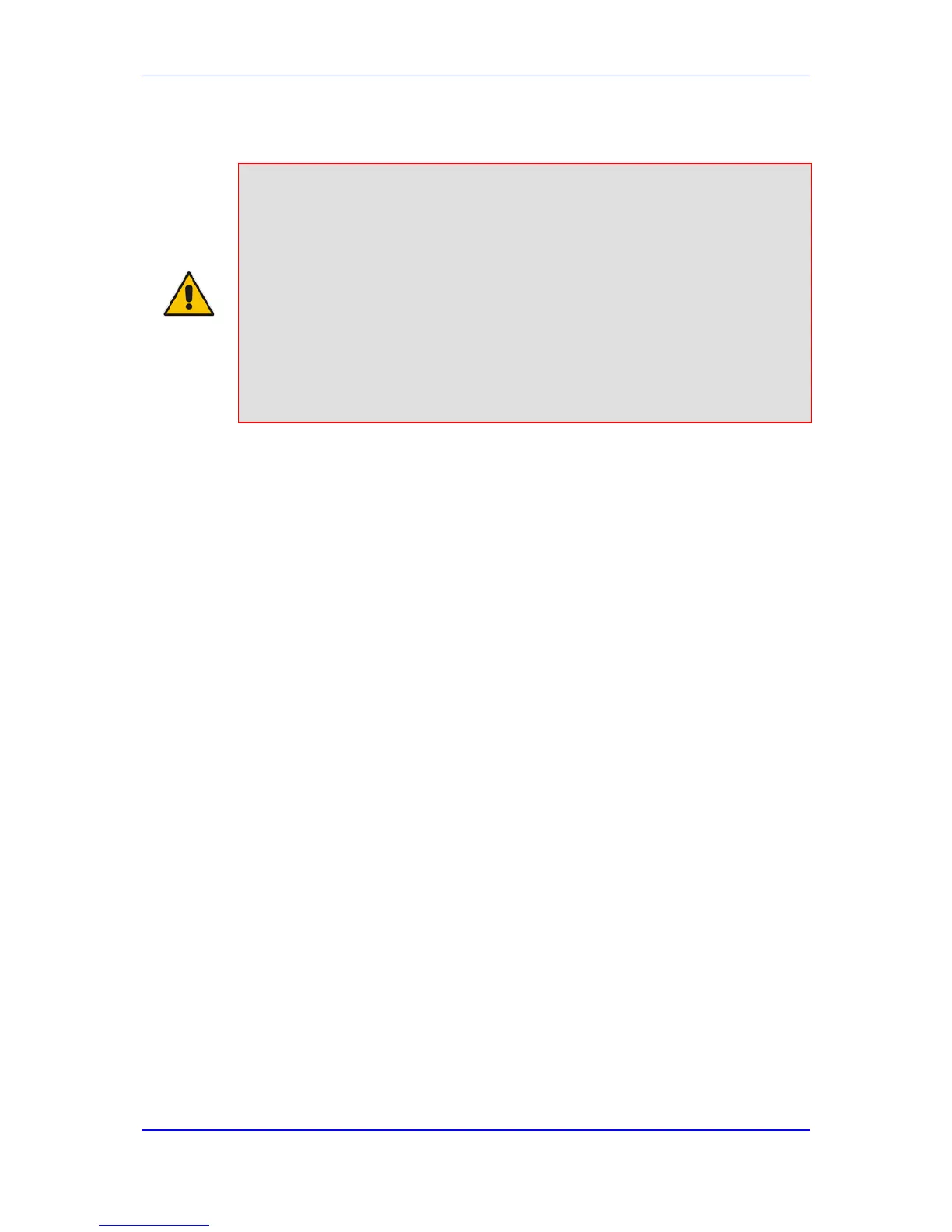Notes:
• Three-way conferencing using an external conference server is
supported only by FXS interfaces.
• Instead of using the flash-hook button to establish a three-way
conference call, you can dial a user-defined hook-flash code (e.g., "*1"),
configured by the HookFlashCode parameter.
• Three-way conferencing is applicable only to FXS and BRI interfaces.
Three-way conferencing support for the BRI phones connected to the
device complies with ETS 300 185.
• The device supports high definition, three-way conferencing using
wideband codecs (e.g., G.722 and AMR-WB). This allows conference
participants to experience wideband voice quality. Call conferences can
also include narrowband and wideband participants.
The following example demonstrates three-way conferencing using the device's local, on-
board conferencing feature. In this example, telephone "A" connected to the device
establishes a three-way conference call with two remote IP phones, "B" and "C":
1. A establishes a regular call with B.
2. A places B on hold, by pressing the telephone's flash-hook button.
3. A hears a dial tone and then makes a call to C.
4. C answers the call.
5. A establishes a three-way conference call with B and C, by pressing the flash-hook
button and digit 3.
To configure this local, on-board three-way conferencing:
6. Open the Supplementary Services page.
7. Set 'Enable 3-Way Conference' to Enable (Enable3WayConference = 1).
8. Set 'Three Way Conference Mode' to On Board (3WayConferenceMode = 2).
9. Set 'Flash Keys Sequence Style' to Sequence 1 or Sequence 2
(FlashKeysSequenceStyle = 1 or 2).
28.11 Emergency E911 Phone Number Services
This section describes the device's support for emergency phone number services. The
device supports the North American emergency telephone number system known as
Enhanced 911 (E911), according to the TR-TSY-000350 and Bellcore's GR-350-Jun2003
standards. The E911 emergency system automatically associates a physical address with
the calling party's telephone number, and routes the call to the most appropriate (closest)
Public Safety Answering Point (PSAP), allowing the PSAP to quickly dispatch emergency
response (e.g., police) to the caller's location.
Typically, the dialed emergency number is routed to the appropriate PSAP by the
telephone company's switch, known as a 911 Selective Router (or E911 tandem switch). If
the PSAP receives calls from the telephone company on old-style digital trunks, they are
specially formatted Multi-Frequency (MF) trunks that pass only the calling party's number
(known as Automatic Number Identification - ANI). Once the PSAP receives the call, it
searches for the physical address that is associated with the calling party's telephone
number (in the Automatic Location Identification database - ALI).

